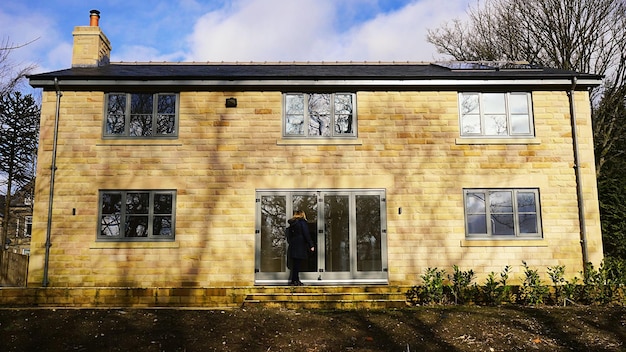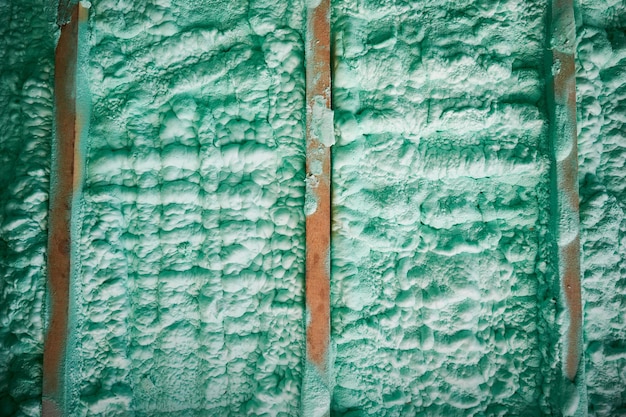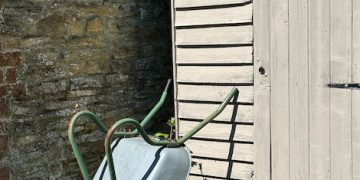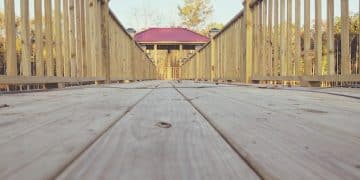Home Insulation: Cut Heat Loss by 35% & Save Money Now

Anúncios
Home insulation is a crucial investment for UK homeowners looking to reduce heat loss by up to 35%, leading to significant energy savings and a cosier home environment.
Investing in home insulation: reduce heat loss by 35% and save money is a smart move for any UK homeowner. Not only will you enjoy a warmer, more comfortable living space, but you’ll also see a noticeable decrease in your energy bills. Let’s explore how proper insulation can transform your home and your finances.
Anúncios
Understanding the Basics of Home Insulation
Home insulation is a vital aspect of maintaining a comfortable and energy-efficient home. It acts as a barrier, preventing heat from escaping during the colder months and keeping it out during the warmer months,
leading to a more consistent indoor temperature and reduced energy consumption.
Effective insulation can significantly lower your energy bills and reduce your carbon footprint. Let’s dive into its importance and how it works.
Anúncios
Why is Home Insulation Important?
Home insulation plays a key role in several areas, from comfort to financial savings.
- Keeps your home comfortable
- Reduces energy bills
- Reduces carbon footprint
By preventing heat transfer, insulation ensures that your heating and cooling systems don’t have to work as hard, resulting in lower energy consumption and reduced wear and tear on your HVAC equipment.

How Does Home Insulation Work?
Insulation works by slowing down the transfer of heat through conduction, convection, and radiation.
- Insulation materials have a high thermal resistance
- They create air pockets that trap heat
- Prevents heat from easily passing through the walls, floors, and roof of your home
Different types of insulation materials have varying R-values, which measure their ability to resist heat flow. The higher the R-value, the better the insulation’s performance.
Understanding home insulation involves recognizing its central role in comfort, energy efficiency, and environmental responsibility. Proper installation and maintenance can make a significant difference in your home’s performance and your overall well-being.
Types of Home Insulation Materials
Selecting the right insulation material is crucial for achieving optimal energy efficiency and comfort in your home.
Different materials offer varying levels of thermal resistance, environmental impact, and cost.
Each type has unique properties that make it suitable for different applications and climates.
Let’s explore some of the most common types of home insulation materials:
Fibreglass Insulation
Fibreglass is one of the most widely used insulation materials due to its affordability and effectiveness.
It’s made from recycled glass, sand, and other materials, making it an environmentally friendly option.
Fibreglass insulation is commonly available in batts, rolls, and loose-fill forms.
- Affordable and widely available
- Good thermal performance
- Can be itchy and irritating to install
While effective in reducing heat transfer, fibreglass insulation can lose its effectiveness if it becomes compressed or wet. Proper installation and moisture control are essential to maintaining its performance.
Spray Foam Insulation
Spray foam insulation is a versatile option known for its excellent insulating properties and ability to seal air leaks.
It’s available in two main types: open-cell and closed-cell.
- Forms an airtight seal, preventing air leaks.
- Provides superior insulation performance compared to traditional materials.
- More expensive than some other insulation options.
Spray foam insulation requires professional installation to ensure proper application and prevent potential issues such as off-gassing or moisture entrapment.

Cellulose Insulation
Cellulose insulation is made from recycled paper products, such as newspapers and cardboard. It’s treated with borate to resist pests and fire.
Cellulose insulation is commonly installed as loose-fill, often used in attics and walls.
- Environmentally friendly due to its recycled content.
- Provides good thermal and acoustic insulation.
- Can settle over time, reducing its effectiveness.
Cellulose insulation is a sustainable choice with decent thermal performance, but it’s essential to consider its potential for settling over time.
Selecting the right insulation material involves considering your budget, climate, and specific needs. Each type offers unique advantages and disadvantages, so it’s important to research and compare your options carefully.
Identifying Areas of Heat Loss in Your Home
Identifying areas of heat loss in your home is the first step toward improving energy efficiency and reducing your heating bills.
By pinpointing these weak spots, you can prioritize insulation upgrades and other energy-saving measures.
Common areas of heat loss include attics, walls, windows, doors, and basements.
Let’s take a closer look at these areas and how to identify potential issues:
Attics
Attics are a primary source of heat loss in many homes, as heat rises and escapes through the roof.
Inadequate insulation in the attic can lead to significant energy waste and high heating costs.
Signs of heat loss in the attic include ice dams on the roof, cold spots on the ceiling, and high heating bills.
- Check insulation levels and R-values
- Look for gaps, drafts, and moisture.
- Ensure proper ventilation to prevent moisture buildup.
Addressing attic insulation issues can result in substantial energy savings and improved comfort throughout your home.
Walls
Walls can also be significant sources of heat loss, especially if they are poorly insulated. Air leaks around windows and doors can further exacerbate the problem.
- Check for drafts near windows and doors
- Feel for cold spots on walls during cold weather
- Consider a professional energy audit to assess wall insulation levels
Sealing air leaks and adding insulation to walls can significantly reduce heat loss and improve your home’s energy efficiency.
Windows and Doors
Windows and doors are notorious for being sources of heat loss, particularly older, single-pane models.
Gaps around frames and seals can allow significant amounts of heat to escape, leading to higher energy bills and discomfort.
- Install weather stripping and caulking to seal gaps
- Upgrade to energy-efficient, double-pane windows
- Use thermal curtains or blinds to add insulation
Upgrading windows and doors can be a significant investment, but the long-term energy savings and comfort benefits make it worthwhile.
Identifying areas of heat loss in your home is a crucial step toward improving energy efficiency and reducing your carbon footprint. By addressing these issues, you can create a more comfortable, energy-efficient, and sustainable living environment.
DIY vs. Professional Home Insulation Installation
When it comes to installing home insulation, you have the option of tackling the project yourself or hiring a professional contractor.
Both approaches have their pros and cons, depending on your skill level, budget, and the complexity of the project.
Deciding whether to DIY or hire a pro involves carefully weighing the benefits and risks of each approach.
Let’s explore the factors to consider when making this decision:
Benefits of DIY Insulation Installation
DIY insulation installation can be a cost-effective way to improve energy efficiency in your home.
It allows you to save on labor costs and gain hands-on experience with home improvement projects.
However, it also requires time, effort, and a certain level of skill.
- Cost savings on labor
- Flexibility to work on your own schedule
- Opportunity to learn new skills
Before embarking on a DIY insulation project, be sure to research the proper techniques and safety precautions. It’s essential to wear protective gear, such as gloves, masks, and eye protection, to prevent irritation and respiratory issues.
Benefits of Professional Insulation Installation
Hiring a professional insulation contractor offers several advantages over DIY installation.
Professionals have the expertise, experience, and equipment to ensure that the job is done correctly and efficiently.
They can also identify potential issues, such as air leaks or moisture problems, and provide solutions to address them.
- Expertise and experience
- Proper equipment and tools
- Warranty and insurance coverage
While professional installation typically costs more than DIY, the long-term benefits of improved energy efficiency and comfort often outweigh the initial investment.
Factors to Consider When Deciding
When deciding between DIY and professional insulation installation, consider the following factors:
- Project complexity
- Your skill level and experience
- Your budget
If you’re unsure whether to tackle the project yourself or hire a professional, consider getting quotes from multiple contractors and discussing the scope of work and potential challenges. This can help you make an informed decision that aligns with your needs and budget.
Deciding between DIY and professional insulation installation requires careful consideration of your skill level, budget, and project requirements. Both approaches can yield positive results, but it’s essential to weigh the pros and cons of each before making a decision.
Maximising Savings: Pairing Insulation with Other Energy-Efficient Upgrades
While installing insulation is a great way to reduce energy loss, combining it with other energy-efficient upgrades can give you even greater savings.
Improvements such as modern windows, doors and efficient heating systems combined with good insulation can provide a huge reduction on energy bills
These additional upgrades can work together to improve your homes thermal performance and reduce its carbon footprint.
Let’s examine what the best options are for improvements.
Upgrade The Doors and Windows
Modern windows and doors are produced to provide a superior thermal barrier, reducing heat transfer which helps keep your home insulated.
When combined with quality insulation materials this creates a very effective thermal barrier preventing heat loss in winter and excessive heat gain in summer.
- Reduce drafts and air leaks.
- Improve overall home comfort.
- Potential increased property value.
Well installed doors and windows work in tandem with insulation to optimise energy efficiency in your home.
Consider Renewable Energy Systems
Renewable energy systems such as solar panels on your roof combined with sufficient insulation in your home can provide an opportunity to substantially reduce your dependency on traditional energy sources
Generating your own energy with solar panels can offset your energy consumption reducing your carbon footprint.
- Lower your carbon footprint.
- Reduce dependency on non-renewable energy.
- Save money on your energy bills.
Renewable energy is effective when combined with appropriate home insulation, the benefits can be significant.
| Key Point | Brief Description |
|---|---|
| 🏠 Insulation Basics | Understand how insulation prevents heat transfer, keeping your home comfortable and reducing energy bills. |
| 🌱 Material Types | Explore various insulation materials like fibreglass, spray foam, and cellulose, each with unique properties and benefits. |
| 🔍 Heat Loss | Identify key areas for heat loss in your home, including attics, walls, windows, and doors, to improve energy efficiency. |
| 🛠️ DIY vs Pro | Decide between DIY or professional insulation installation based on your skills, budget, and project complexity. |
Frequently Asked Questions (FAQ)
The main benefit of home insulation is reducing heat loss, especially during the colder months, helping to keep your home warmer, and saving on heating bills.
Attics are a priority due to the rising of heat. Walls, windows, and doors are also high contributors to heat loss and should be addressed.
Cellulose insulation known for recycled content is a great option. Fibreglass with recycled glass also offers a sustainable choice.
Spray foam provides an effective air tight seal in your home preventing drafts and heat loss. This is great cost-effective value preventing you over spending on energy.
In winter, insulation keeps heat inside reducing the need for heating. In summer, it keeps heat out, so using air conditioning is not necessary.
Conclusion
Investing in home insulation is a worthwhile decision for homeowners seeking comfort, efficiency, and savings. By understanding the basics, exploring different materials, identifying heat loss areas, and weighing DIY versus professional installation, you can improve your home’s thermal performance and reduce your carbon footprint.





